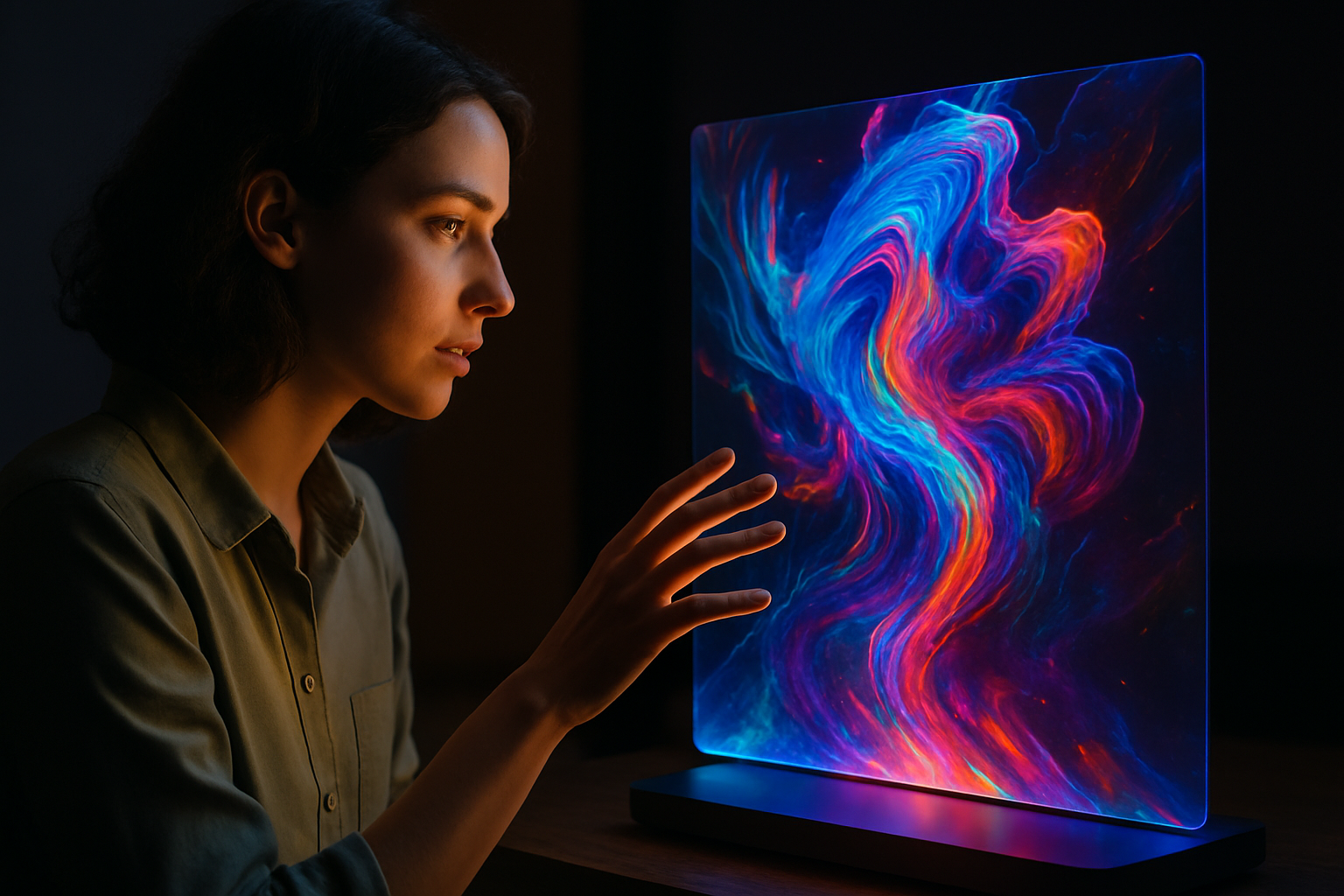Holographic Art: Redefining Visual Boundaries
In the ever-evolving landscape of contemporary art, a mesmerizing medium is pushing the boundaries of visual perception and challenging traditional notions of artistic creation. Holographic art, once relegated to the realm of science fiction, has emerged as a powerful form of expression that blends cutting-edge technology with artistic vision. This groundbreaking medium is captivating audiences worldwide, offering immersive experiences that blur the lines between reality and illusion.

From Scientific Tool to Artistic Medium
The transition of holography from a scientific tool to an artistic medium was marked by significant technological advancements. Early holograms were monochromatic and required laser light for viewing, limiting their practical applications. However, the development of white-light transmission holograms in the 1970s opened up new possibilities for artists. This breakthrough allowed holograms to be viewed under normal lighting conditions, making them more accessible to galleries and museums.
The Holographic Renaissance
In recent years, holographic art has experienced a renaissance, fueled by technological innovations and a growing interest in immersive experiences. Modern holographic displays can now project full-color, high-resolution images that appear to float in mid-air, creating stunning visual spectacles. Artists are leveraging these advancements to create works that challenge spatial perception and engage viewers in unprecedented ways.
Pioneers of Contemporary Holographic Art
Leading the charge in this new wave of holographic art are visionaries who seamlessly blend technology with artistic expression. Artists like Matthew Schreiber and Mehdi Ghayoumi are pushing the boundaries of what’s possible with holography. Schreiber’s large-scale installations use laser light to create immersive environments that play with viewers’ perceptions of space and time. Ghayoumi, on the other hand, combines holography with traditional sculpture to create hybrid works that bridge the gap between the physical and the virtual.
The Intersection of Art and Technology
Holographic art represents a unique intersection of art and technology, requiring artists to possess both creative vision and technical expertise. The creation of a holographic artwork involves complex processes such as laser interference, photosensitive materials, and precise light manipulation. This marriage of scientific knowledge and artistic skill has given rise to a new breed of artist-technologists who are equally at home in a laboratory as they are in a studio.
Challenges and Controversies
Despite its growing popularity, holographic art faces several challenges. The high cost of equipment and the technical complexity of creating holograms can be barriers for many artists. Additionally, there are ongoing debates within the art world about the place of technology-driven art forms. Some critics argue that the emphasis on technological spectacle can overshadow artistic substance, while proponents see holography as a natural evolution of visual art in the digital age.
The Future of Holographic Art
As technology continues to advance, the possibilities for holographic art are expanding exponentially. The integration of artificial intelligence and interactive elements promises to create even more engaging and responsive holographic experiences. Some artists are exploring the potential of augmented reality to blend holographic art with the physical world, creating site-specific installations that transform public spaces.
Impact on Other Art Forms
The influence of holographic art is beginning to ripple through other artistic disciplines. Theater productions are incorporating holographic elements to create stunning visual effects, while musicians are experimenting with holographic performances that allow them to appear on multiple stages simultaneously. This cross-pollination of ideas is fostering new forms of creative expression and challenging traditional boundaries between artistic mediums.
Holographic Art in the Digital Age
In an era dominated by digital screens, holographic art offers a refreshing alternative that engages viewers in three-dimensional space. As our lives become increasingly intertwined with virtual environments, holographic art serves as a bridge between the physical and digital worlds, offering tangible yet ethereal experiences that resonate with contemporary audiences.
Conclusion
Holographic art stands at the forefront of a new artistic frontier, challenging our perceptions and expanding the possibilities of visual expression. As technology continues to evolve and artists push the boundaries of this medium, we can expect to see even more stunning and thought-provoking holographic works that redefine our understanding of art, space, and reality itself. The fusion of scientific innovation and artistic vision in holographic art not only offers new avenues for creative expression but also reflects the increasingly blurred lines between technology and human experience in our modern world.





